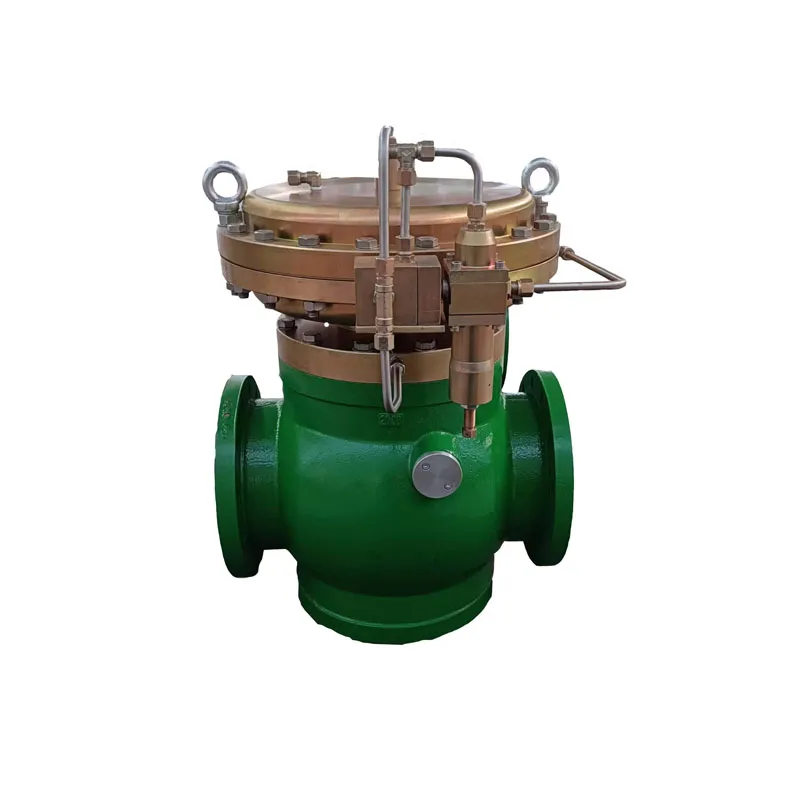
Dec . 07, 2024 08:33
Back to list
Gas Pressure Regulation Valve for Efficient Flow Control and Safety Management
Understanding Gas Pressure Regulating Valves
In industrial and domestic applications, gas pressure regulating valves play a crucial role in ensuring the safe and efficient use of gas systems. The functionality and importance of these valves are rooted in their ability to control gas pressure, thereby protecting equipment and ensuring stable performance. This article will explore the concept of gas pressure regulating valves, their types, working mechanisms, applications, and maintenance considerations.
What is a Gas Pressure Regulating Valve?
A gas pressure regulating valve (often abbreviated as pressure regulator) is a device designed to reduce high inlet pressure from a gas supply to a lower, usable outlet pressure. This regulation is essential because fluctuations or excessive pressure can damage equipment, create safety hazards, or lead to inefficient gas usage. By maintaining a consistent pressure, these valves help optimize the performance of gas appliances and systems.
How Do Gas Pressure Regulating Valves Work?
The operation of a gas pressure regulating valve can be described in a few key steps
1. Inlet and Outlet Pressure Sensing The valve is equipped with sensing mechanisms to monitor both inlet and outlet pressures continuously. When pressure in the system rises above a pre-set limit, the valve activates to modulate the flow.
2. Control Mechanism Most gas regulators utilize a spring-loaded diaphragm. When the inlet pressure increases, it pushes against the diaphragm, which in turn compresses the spring and allows the valve to open or close accordingly.
3. Adjustable Settings Many models are adjustable, allowing users to set their desired outlet pressure, which can be crucial for different applications. Some regulators also come with pressure gauges for easy monitoring.
Types of Gas Pressure Regulating Valves
Gas pressure regulators can be categorized into different types based on their applications and designs
1. Single-stage Regulators These are suitable for low-pressure applications. They reduce the inlet pressure to the desired outlet pressure in one step. They are uncomplicated and easy to maintain.
.
3. Electronic Regulators With advancements in technology, electronic pressure regulators have emerged. These can adjust pressure automatically based on feedback from the system, providing high accuracy and control.
صمام منظم ضغط الغاز

Applications of Gas Pressure Regulators
Gas pressure regulating valves have a wide range of applications across various sectors
- Residential In home gas systems, these regulators ensure that appliances, such as heaters, stoves, and water heaters, receive gas at safe operating pressures.
- Industrial In manufacturing and processing industries, regulators maintain the necessary pressure for various operations, including combustion and heating processes.
- Commercial Restaurants and food services rely on gas regulators to provide consistent fuel to kitchen equipment.
- Automotive In vehicles that run on natural gas, regulators are essential for maintaining appropriate pressure for fuel injectors.
Maintenance Considerations
To ensure optimal performance and longevity of gas pressure regulating valves, regular maintenance is essential
1. Inspection Regularly inspect the valve for any signs of wear, damage, or leaks. This includes checking seals and fittings for integrity.
2. Cleaning Keep the regulator clean from dirt and debris, which can impede function. Dust and grime can build up and affect the sensing mechanism.
3. Calibration Periodically check and calibrate the outlet pressure settings to ensure they remain within the desired range.
4. Professional Servicing Engage professionals for servicing and repairs to prevent any safety risks associated with malfunctioning valves.
Conclusion
Gas pressure regulating valves are vital components in gas distribution systems, playing an essential role in safety, efficiency, and performance. Understanding their operation, types, and maintenance needs can assist in making informed decisions regarding gas systems in residential, industrial, and commercial applications. With proper use and care, these regulators ensure that gas is delivered safely and efficiently, contributing to a smooth and effective operation of gas-powered appliances and systems.
Next:
Latest news
-
Safety Valve Spring-Loaded Design Overpressure ProtectionNewsJul.25,2025
-
Precision Voltage Regulator AC5 Accuracy Grade PerformanceNewsJul.25,2025
-
Natural Gas Pressure Regulating Skid Industrial Pipeline ApplicationsNewsJul.25,2025
-
Natural Gas Filter Stainless Steel Mesh Element DesignNewsJul.25,2025
-
Gas Pressure Regulator Valve Direct-Acting Spring-Loaded DesignNewsJul.25,2025
-
Decompression Equipment Multi-Stage Heat Exchange System DesignNewsJul.25,2025

